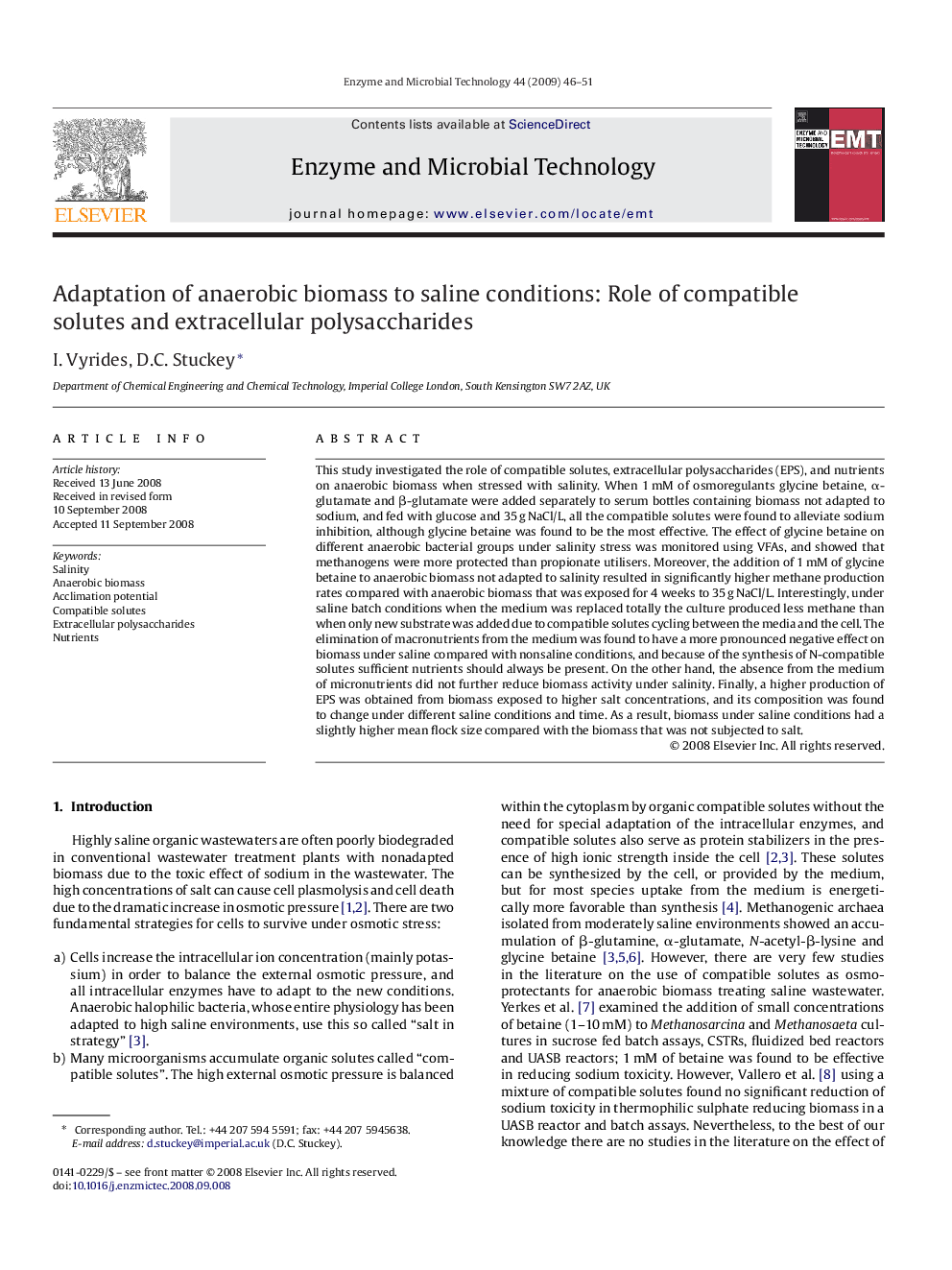| Article ID | Journal | Published Year | Pages | File Type |
|---|---|---|---|---|
| 17857 | Enzyme and Microbial Technology | 2009 | 6 Pages |
This study investigated the role of compatible solutes, extracellular polysaccharides (EPS), and nutrients on anaerobic biomass when stressed with salinity. When 1 mM of osmoregulants glycine betaine, α-glutamate and β-glutamate were added separately to serum bottles containing biomass not adapted to sodium, and fed with glucose and 35 g NaCl/L, all the compatible solutes were found to alleviate sodium inhibition, although glycine betaine was found to be the most effective. The effect of glycine betaine on different anaerobic bacterial groups under salinity stress was monitored using VFAs, and showed that methanogens were more protected than propionate utilisers. Moreover, the addition of 1 mM of glycine betaine to anaerobic biomass not adapted to salinity resulted in significantly higher methane production rates compared with anaerobic biomass that was exposed for 4 weeks to 35 g NaCl/L. Interestingly, under saline batch conditions when the medium was replaced totally the culture produced less methane than when only new substrate was added due to compatible solutes cycling between the media and the cell. The elimination of macronutrients from the medium was found to have a more pronounced negative effect on biomass under saline compared with nonsaline conditions, and because of the synthesis of N-compatible solutes sufficient nutrients should always be present. On the other hand, the absence from the medium of micronutrients did not further reduce biomass activity under salinity. Finally, a higher production of EPS was obtained from biomass exposed to higher salt concentrations, and its composition was found to change under different saline conditions and time. As a result, biomass under saline conditions had a slightly higher mean flock size compared with the biomass that was not subjected to salt.
